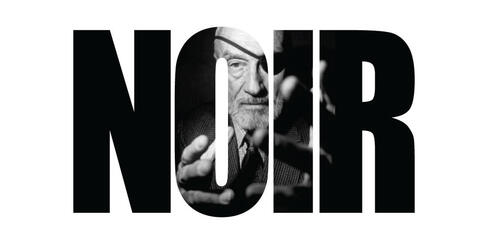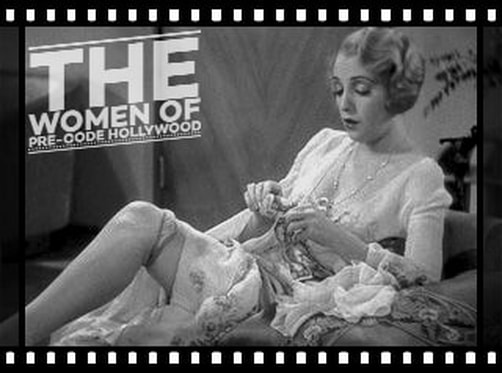ROBERT MONTGOMERY
AND FILM NOIR
Robert Montgomery made a significant impact on the film noir genre through his work as an actor and director. He starred in several notable film noir classics and also directed one influential film noir entry. Here are some ways in which Robert Montgomery contributed to the film noir genre:
"Lady in the Lake" (1947): Montgomery not only starred in this film, but he also directed it. The movie is unique in its visual style as it is shot almost entirely from the subjective point of view of the main character, with the camera serving as his eyes. This experimental approach added an innovative twist to the film noir genre, immersing the audience into the protagonist's experience.
Acting versatility: Montgomery showcased his acting range by taking on diverse roles in film noir. He portrayed both sympathetic and morally ambiguous characters, often caught in the intricate web of crime and deception. His performances demonstrated the complex and conflicted nature of the typical film noir protagonist.
Collaboration with renowned directors: Montgomery worked with acclaimed directors such as Alfred Hitchcock and John Huston, appearing in films that incorporated elements of film noir. In Hitchcock's "Spellbound" (1945), Montgomery played a pivotal role as an amnesiac suspected of murder, contributing to the suspenseful atmosphere characteristic of film noir.
Dark and brooding presence: Montgomery had a natural ability to embody the moody and cynical characteristics often associated with film noir. His charismatic yet enigmatic persona lent itself well to the morally ambiguous and shadowy world of noir storytelling.
Overall, Robert Montgomery's involvement in film noir, both as an actor and director, contributed to the genre's aesthetic and thematic elements. His performances and directorial choices helped shape the atmospheric and psychological nature of film noir and left a lasting impact on the genre's development.
"Lady in the Lake" (1947): Montgomery not only starred in this film, but he also directed it. The movie is unique in its visual style as it is shot almost entirely from the subjective point of view of the main character, with the camera serving as his eyes. This experimental approach added an innovative twist to the film noir genre, immersing the audience into the protagonist's experience.
Acting versatility: Montgomery showcased his acting range by taking on diverse roles in film noir. He portrayed both sympathetic and morally ambiguous characters, often caught in the intricate web of crime and deception. His performances demonstrated the complex and conflicted nature of the typical film noir protagonist.
Collaboration with renowned directors: Montgomery worked with acclaimed directors such as Alfred Hitchcock and John Huston, appearing in films that incorporated elements of film noir. In Hitchcock's "Spellbound" (1945), Montgomery played a pivotal role as an amnesiac suspected of murder, contributing to the suspenseful atmosphere characteristic of film noir.
Dark and brooding presence: Montgomery had a natural ability to embody the moody and cynical characteristics often associated with film noir. His charismatic yet enigmatic persona lent itself well to the morally ambiguous and shadowy world of noir storytelling.
Overall, Robert Montgomery's involvement in film noir, both as an actor and director, contributed to the genre's aesthetic and thematic elements. His performances and directorial choices helped shape the atmospheric and psychological nature of film noir and left a lasting impact on the genre's development.
AVAILABLE FILMS:
BIG HOUSE, THE (1930)
DIVORCEE, THE (1930)
EARL OF CHICAGO, THE (1940)
EASIEST WAY, THE (1931)
FAITHLESS (1932)
FAST AND LOOSE (1939)
FORSAKING ALL OTHERS (1935)
FUGITIVE LOVERS (1934)
HAUNTED HONEYMOON (1940)
HELL BELOW (1933)
HIDE-OUT (1934)
JUNE BRIDE (1948)
LADY IN THE LAKE (1946)
LAST OF MRS. CHEYNEY, THE (1937)
MR. & MRS. SMITH (1941)
MYSTERY OF MR. X, THE (1934)
NIGHT FLIGHT (1933)
NIGHT MUST FALL (1937)
RAGE IN HEAVEN (1941)
RIDE THE PINK HORSE (1947)
RIPTIDE (1934)
STRANGERS MAY KISS (1931)
THEIR OWN DESIRE (1929)
THEY WERE EXPENDABLE (1945)
UNTAMED (1929)
WHEN LADIES MEET (1941)
DIVORCEE, THE (1930)
EARL OF CHICAGO, THE (1940)
EASIEST WAY, THE (1931)
FAITHLESS (1932)
FAST AND LOOSE (1939)
FORSAKING ALL OTHERS (1935)
FUGITIVE LOVERS (1934)
HAUNTED HONEYMOON (1940)
HELL BELOW (1933)
HIDE-OUT (1934)
JUNE BRIDE (1948)
LADY IN THE LAKE (1946)
LAST OF MRS. CHEYNEY, THE (1937)
MR. & MRS. SMITH (1941)
MYSTERY OF MR. X, THE (1934)
NIGHT FLIGHT (1933)
NIGHT MUST FALL (1937)
RAGE IN HEAVEN (1941)
RIDE THE PINK HORSE (1947)
RIPTIDE (1934)
STRANGERS MAY KISS (1931)
THEIR OWN DESIRE (1929)
THEY WERE EXPENDABLE (1945)
UNTAMED (1929)
WHEN LADIES MEET (1941)
VIDEO TRIBUTE
Robert Montgomery

Robert Montgomery was an American actor, director, and producer. He was born on May 21, 1904, in Beacon, New York, and passed away on September 27, 1981, in New York City.
Montgomery began his career in the entertainment industry during the silent film era and transitioned to sound films in the 1930s. He gained prominence for his versatile acting abilities, appearing in a wide range of genres including dramas, comedies, and thrillers.
Some of Montgomery's notable films include "Night Must Fall" (1937), for which he received an Academy Award nomination for Best Actor, "Here Comes Mr. Jordan" (1941), "The Lady in the Lake" (1947), and "Ride the Pink Horse" (1947), which he also directed.
In addition to his successful acting career, Montgomery was also involved in World War II, serving as a lieutenant commander in the United States Navy. He was awarded several honors for his service.
Later in his career, Montgomery ventured into television, hosting his own anthology series called "Robert Montgomery Presents" from 1950 to 1957. The show featured various dramatic and literary adaptations.
Robert Montgomery is remembered for his versatile acting skills and his contributions to both film and television.
Montgomery began his career in the entertainment industry during the silent film era and transitioned to sound films in the 1930s. He gained prominence for his versatile acting abilities, appearing in a wide range of genres including dramas, comedies, and thrillers.
Some of Montgomery's notable films include "Night Must Fall" (1937), for which he received an Academy Award nomination for Best Actor, "Here Comes Mr. Jordan" (1941), "The Lady in the Lake" (1947), and "Ride the Pink Horse" (1947), which he also directed.
In addition to his successful acting career, Montgomery was also involved in World War II, serving as a lieutenant commander in the United States Navy. He was awarded several honors for his service.
Later in his career, Montgomery ventured into television, hosting his own anthology series called "Robert Montgomery Presents" from 1950 to 1957. The show featured various dramatic and literary adaptations.
Robert Montgomery is remembered for his versatile acting skills and his contributions to both film and television.
Quotes:
"If you are lucky enough to be a success, by all means enjoy the applause and the adulation of the public. But never, never believe it."
[Asked by reporters what it was like to work with Greta Garbo on Inspiration (1931)]: "Making a film with Garbo doesn't constitute an introduction."
[on his Hollywood film career] "I worked hard. It was full of disappointment and joy, discouragement and rewards. I'll be forever grateful for all those wonderful years."
- Robert Montgomery
Trivia:
Shortly after Dwight D. Eisenhower was inaugurated in 1953, the new President asked Montgomery to become the White House's television consultant. Montgomery agreed and insisted on taking no pay. Pioneered the concept of the political "image consultant" in the early television era by advising President Eisenhower on how to most effectively present himself to television viewers.
Following Richard Nixon's disastrous first televised debate with John F. Kennedy during the 1960 campaign, Eisenhower remarked that he was certain that if Nixon had only let Montgomery coordinate his appearance, Nixon would have performed better, and would have probably won the debate--and the election.
When MGM studio chief Louis B. Mayer refused Montgomery a salary raise he deserved, the actor reportedly replied, "If you were a younger man, Mr. Mayer, I'd give you a beating".
Appeared with Rosalind Russell in five films: Forsaking All Others (1934), Trouble for Two (1936), Live, Love and Learn (1937), Night Must Fall (1937) and Fast and Loose (1939).
His daughter Elizabeth Montgomery starred in the long-running TV series "Bewitched," playing the leading role of Samantha Stevens.
Montgomery was teamed with Joan Crawford in six films: Untamed (1929), Our Blushing Brides (1930), Letty Lynton (1932), Forsaking All Others (1934), No More Ladies (1935), and The Last of Mrs. Cheyney (1937).
Following Richard Nixon's disastrous first televised debate with John F. Kennedy during the 1960 campaign, Eisenhower remarked that he was certain that if Nixon had only let Montgomery coordinate his appearance, Nixon would have performed better, and would have probably won the debate--and the election.
When MGM studio chief Louis B. Mayer refused Montgomery a salary raise he deserved, the actor reportedly replied, "If you were a younger man, Mr. Mayer, I'd give you a beating".
Appeared with Rosalind Russell in five films: Forsaking All Others (1934), Trouble for Two (1936), Live, Love and Learn (1937), Night Must Fall (1937) and Fast and Loose (1939).
His daughter Elizabeth Montgomery starred in the long-running TV series "Bewitched," playing the leading role of Samantha Stevens.
Montgomery was teamed with Joan Crawford in six films: Untamed (1929), Our Blushing Brides (1930), Letty Lynton (1932), Forsaking All Others (1934), No More Ladies (1935), and The Last of Mrs. Cheyney (1937).




